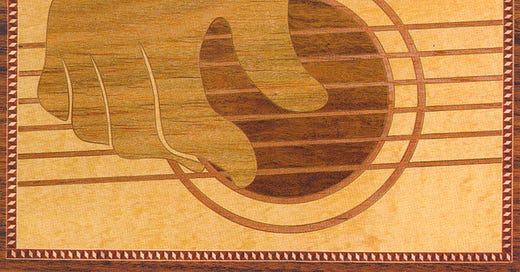EVERY GENRE PROJECT - December 27 - Brazilian Classical Music
December 27, 2024
Genre of the Day - Brazilian Classical Music
Album of the Day - Toquinho e Paulinho Noguiera (1999)
I’m currently reading the excellent book Through The Language Glass by Guy Deutscher, an incisive, excellent inquiry into how different languages do and do not express the human experience differently. It’s fascinating, and the current passage I’m on is discussing the nebulous difficulty in defining the ‘complexity’ of a language. Shifting it to a musical perspective, it begs the question: is each genre equally internally complex? That is another impossible question to answer, as what constitutes musical complexity relies on any number of dimensions—is it the range of notes, the uniqueness of harmonies and melodies, the depth of instrumentation, or the ideas expressed that weigh most heavily? However, in terms of influences, it’s indisputable that Brazil features one of the most diverse musical histories in terms of contributions from cultures across the western coast of the African continent, native populations, the former imperial overlord Portugal, German and Italian immigrants, and neighboring Spanish-speaking countries. Given that the reach of Portuguese-language music is low unless one crosses the Atlantic, Brazil’s musical ecosystem is relatively insular even if it has grown as productively as the Amazon. However, today’s genre traces a wider history of Brazilian music in conversation with the world.
Brazilian classical music’s history simultaneously illustrates the medium’s fluid global flow as much as it tells a story of musical expression’s inherent national and cultural implications. As native Brazilian classical composers began coming to prominence in the 17th and 18th centuries following the establishment of Brazilian classical ensembles by Portuguese missionaries over the decades of Brazil’s settlement, their expression closely drew from the overarching ideas being produced in Europe at the time. A penchant for opera characterized the tastes of Brazil’s upper crust in the early 19th century, an early reflection of the country’s deep appreciation for individual performers (come to Brasil!)—who can forget when 1.6 million people hit the sands of Copacabana in May to see Madonna? As composers observed the unique tastes of Brazilian audiences, certain pioneers began to infuse pieces with touches of unique rhythmic and melodic feel such as in select output of Antônio Carlos Gomes. As a master of mid-1800s opera and the first opera composer in the Americas to be celebrated by the European opera establishment, he exemplified the complicated relationship between internationally emergent Brazilian maestros and fully embracing unique national sounds and statements—though he composed an opera storying the antislavery struggle of Afro-Brazilians that debuted in Italy in 1889, he also refused the opportunity to compose the Brazilian national anthem as he was not a republican.
It wasn’t until the late 1800s that the nation’s classical music would more sharply pivot toward an articulation of classical modes with distinctively Brazilian overtones. Choro was one of the first and most influential genres to have developed in Brazil’s southern urban centers, virtuosic and rhythmically and harmonically complex music first played in a trio of the cavaquinho (a four-stringed instrument), flute, and guitar. Many composers began to recognize the immense and complex value of this popular music and its capacity to blend with the meticulousness of classical composition. As São Paulo rose in influence, its 1920s modernist movement emphasizing “pure Brazilian” art and limiting the European influence the gatekeepers favored further encouraged classical musicians to further incorporate the vibrant array of uniquely Brazilian musical forms. Throughout the 20th century, other camps dabbled with the serialism, tonalism, and other out-there approaches moving throughout the world as some composers resisted an all-Brazilian emphasis and looked once again towards universalism—a push-and-pull as in any music genre filled with thoughtful auteurs.
Today’s album is a dual wedding, between the classical setting with Brazilian guitar excellence and between two eminent masters of the instrument. In dynamically referencing the index of Brazilian musical vernaculars, they are able to articulate endless emotion and charm through the instrument—the drama and intrigue of “Pout-Pourei: Insensatez / Apelo” or the counterintuitive joy of “Triste” as examples of tonal range. There’s explicit mentions of folk genres—“Choro Chorado pra Paulinho Noguiera”, “Samba em Préludio”, and a graceful foray into the abundance of carnaval. It’s a wonderful culmination of centuries of Brazilian musical ideas, centered on the sophisticated senses of these players who weave these sinews together via strings.




